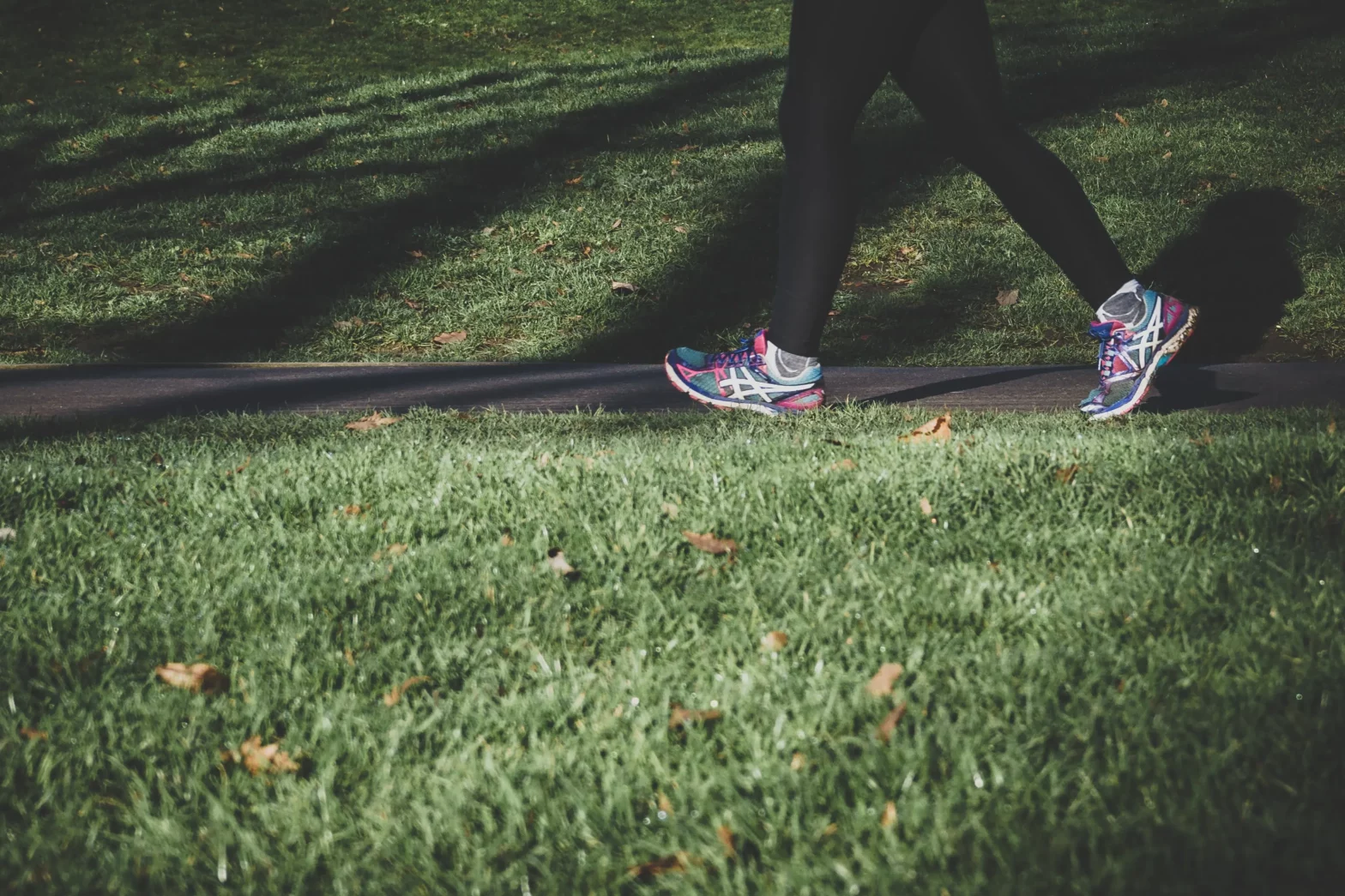As the weather gets nicer, more people will be out walking. I always love seeing my neighbors and talking with them after the winter months. This time not only includes good conversations, but walking together with the goal of trying to achieve a healthier lifestyle. So, I thought this might be a good time to share a few tips if you plan to start walking!
Wearing good shoes is very important. Look for a shoe with a well-padded heel that is light, breathable, and water-resistant. Look at the bottom of the shoes to make sure the soles are not slippery, since the ground is often wet in spots. A running shoe might work just as well as a walking shoe.
Make sure your shoes fit well and are not too loose, or they will not provide the support you need. Likewise, shoes that are too tight can rub your foot or toes and cause calluses or corns. Shoes should feel comfortable when walking, roomy enough to wiggle your toes, but snug enough to keep your foot from sliding around. Purchase new shoes in the afternoon so your feet are slightly swollen so you get a good sense of your true size. It is also important to wear loose, comfortable, and breathable clothes. Wear thin layers of clothing so you can remove a layer, if warm. Wear a hat, sunglasses, and sunscreen if it’s sunny out. It is also a good idea to wear bright colors and/or reflective clothing if walking in the evening or early morning.
In an effort not to get bored and lose interest in walking, don’t want to walk the same route each day. If you are able to switch up your route, that’s better. Not only will the different route keep you interested, it will strengthen your muscles and joints if you can go up and down some hills. If you are going for a long walk or it’s warm out, bring a bottle of water to stay hydrated. It is not necessary to drink liquids with electrolytes or sugar.
Many walkers and runners wear headphones to listen to music. If that is something you like to do, buy headphones that let you hear what is going on around you, like passing cars, sirens, barking dogs, or even others who might be near you.
Although this may not seem like a problem to some, do not look at your phone and walk at the same time. You might trip over a sidewalk or even step into traffic. Pedestrian injuries linked to phone usage has more than doubled since 2004, and most walkers (60%) were distracted by their phones. If you get a call or need to make a call, take a break and use the phone. This is not to say that you should not bring your phone with you. You can use it to track steps and location, as well as provide a map should you need it, and most importantly, can be used in an emergency situation.
If you find you are bored when walking, consider asking a friend or neighbor, or bring your dog with you! Pets love to go on walks! This is also a great time to pray, meditate, practice breathing, or practice mindfulness if you are alone.
Finally, it is important to use good posture when walking. Stand up straight, keep your eyes forward, your shoulders down, back and relaxed. Swing your arms naturally and freely as you step your feet lightly from the heel to the toe. Make sure you give your leg muscles a gentle stretch (10-20 seconds) when you are done with your walk. This will help you keep flexible. Feel free to hold on to a chair or wall to help with your balance when stretching.
I hope these tips are useful should you decide to start a walking regimen. As we get older, sometimes it’s hard to get motivated to start something new, but you feel healthier, stronger, and more flexible, and you might even lose a few pounds!
Adapted from:
- www.webmd.com, Fitness and Exercises, Common Walking Mistakes and How to Fix Them, medically reviewed on 5/16/2021.


